We’ve completed our second full rotation of the twelve classes in the Player’s Handbook, not to mention taken a deep dive into the first 5 levels of D&D’s thirteenth class, the inventive and arcane Artificer! This wave of the Class 101 series will appraise every subclass within the Player’s Handbook and break down each subclass’s strengths, weaknesses, thematic elements, and everything else a player would want to know before playing that subclass. Because of this, you will need to own the Player’s Handbook (or purchase the subclass a la carte on the Marketplace) in order to make full use of this series.
Check out the other guides in the Class 101 series, like the broad overview of the wizard class in Wizard 101: A Beginner’s Guide to the Arcane Arts, Wizard 101: School of Evocation, and Wizard 101: School of Abjuration. If you’re interested in playing other classes, check out the entire Class 101 series.
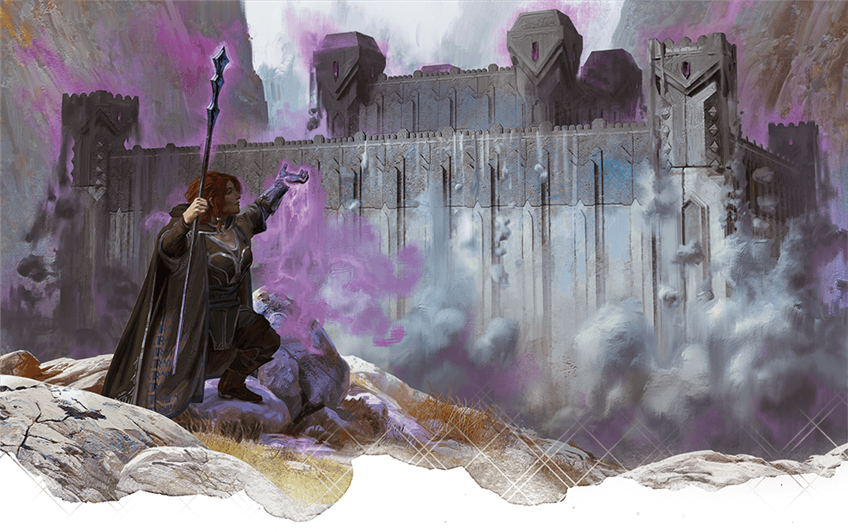
Story of the School of Conjuration
“What are you looking for?” A black-robed pupil, gaunt-faced and dark-eyed from lack of sleep, walked through rows of bookshelves, and looked up at a friend, a fellow pupil, who stood on the top rung of a rolling ladder attached to one of the shelves. The other pupil, swimming in ill-fitting orange robes, ran her finger along the spines of the leather bound tomes on the top shelf.
“A Catalogue of Lesser Elementals, Volume One, have you ever read it?” the other pupil responded. Sewn upon her robes was a symbol like an inverted A, with a wavy line cutting through the triangle—the magical glyph of conjuration.
The other pupil, whose black robes bore the omega-like glyph of necromancy, shook his head. “Ought I to have? Elementals play precious little role in my studies.”
“Oh, you’re useless,” the conjurer sighed, a hint of playfulness twinkling in her tone of frustration.
“You’re not going to do anything stupid with it, if you get it?” the necromancer said dully. “Because… I picked up a new divination over the weekend. I could help find it, if—”
“Would you?” The conjurer looked sharply over her shoulder, beaming at her friend. She turned with such force that she practically slipped from the ladder. She gasped as her foot slipped from the rung, then took a sharp breath in as she stabilized herself. The necromancer took a step forward, his hands open, grimacing, as he tried to remember if he’d prepared feather fall that morning. The conjurer laughed sheepishly. “I’m fine, I’m fine… but, seriously, would you?”
“If,” the necromancer continued unsteadily, “if you promise you’re not going to conjure another cloud of steam mephits in my dorm again. Half my spellbook’s pages are still wrinkled.”
“I’m not looking for little mephits,” the conjurer said, returning to scanning the spines of books. “An azer… I’ve always wanted to speak with an azer. They’re intelligent, skillful, they live on the Elemental Plane of Fire! They—!”
“Please spare me your effusiveness,” the necromancer sighed, though he couldn’t conceal the glint of excitement in his eyes at the thought of watching the illicit summoning an extraplanar being. And an intelligent one at that. “Fine, I’ll do it.” He left aloft his arcane focus, a silver key with a skull at the tip, and muttered an incantation, then spoke aloud the name of the tome. A flash of insight entered the wizard’s mind, and he pointed at the middle of a shelf three rows down. “The book you seek… it’s there.”
“Yes!” the conjurer whooped, and vanished in a cloud of silvery mist, appearing seconds later at the point the necromancer had gestured to. Another group of arcane pupils squeaked in surprise as the conjurer appeared among them, and fled the aisle. The necromancer smiled. His friend would get them into trouble again, he was certain, but it would be worth it.
School of Conjuration Features
Conjurers are talented practitioners of the magic of summoning and creation, through which they can transport items and creatures, or even create matter or energy out of thin air. The wizard gains five subclass features at 2nd, 6th, 10th, and 14th level. You can read all of the School of Abjuration features in the Player’s Handbook. In summary, your subclass features allow you to:
- Study conjuration spells more efficiently, halving the time and cost of copying such spells into your spellbook
- Temporarily create objects out of raw magic
- Teleport within 30 feet, or swap places with another willing creature
- Maintain perfect concentration on your conjuration spells
- Grant your conjured creatures additional durability
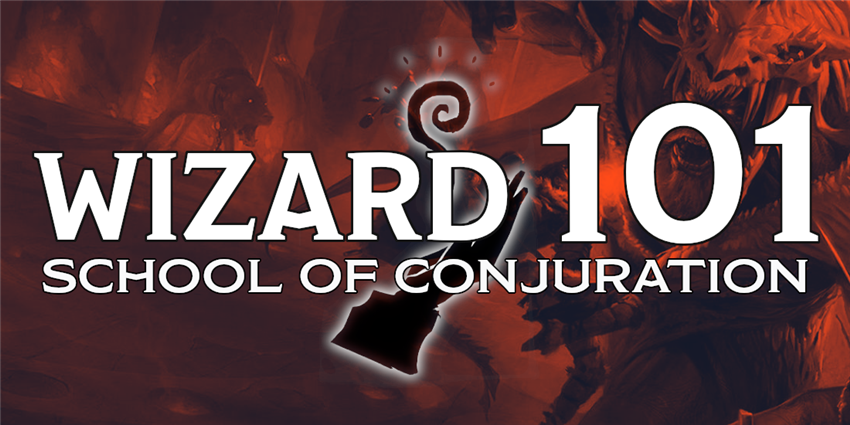
Benefits of the School of Conjuration
Conjuration magic is available to all wizards, but those wizards who specifically study this spell school’s intricacies can enhance their conjurations in ways other spellcasters can only dream of. These benefits, such as being unable to lose concentration on conjuration spells, and giving summoned creatures additional hit points, make you the undisputed master of conjuration spells. Other wizards might be able to use the same spells as you, but they’ll never be quite as good as you at them.
Your earlier class features, such as Minor Conjuration and Benign Teleportation, aren’t raw upgrades to your spells in the way that your higher-level features are, but they’re useful at reinforcing the flavor of your class. Conjuration is about both creation and transportation, and these two features nail those aspects of the conjurer class fantasy. Minor Conjuration is a fun way to solve problems by conjuring a tool that will let you use an imaginative solution. You could conjure a crowbar to pry open a stuck door, a shortsword for a disarmed fighter, a set of thieves’ tools for a rogue who’s lost their lockpicks, a padlock to secure a door, a locket with a secret compartment to hide a letter, or whatever else you can think of.
Your Benign Transposition feature also has a number of applications, combat and while exploring—and with some creative thinking, maybe even in social scenarios. Being able to swap places with your fighter companion when you’re caught off guard by an ambush is fantastic. Casting fly on yourself and using that spell in conjunction with this feature to ferry a friend across a dangerous chasm is useful, too! Get creative with this feature, though do be mindful of its 30-foot range and its once-per-long-rest restriction, though even that is malleable, as long as you’re casting lots of conjuration spells.
Drawbacks of the School of Conjuration
One of the great drawbacks of specializing in conjuration spells is that so many spells in that school require your concentration. Your ability to only concentrate on a single spell at a time isn’t too oppressive at low levels, since there are quite a few useful spells like grease, find familiar, and misty step which don’t require concentration. However, as you gain levels, you’ll find that your most exciting spells, particularly those which summon creatures to fight for you, all demand your precious concentration slot.
Your Focused Conjuration feature, which prevents your concentration on conjuration spells from being broken when you take damage, helps keep your summoned creatures from disappearing in the heat of combat because you lost concentration, but it does little to ease the pain of only being able to focus on one powerful conjuration spell at a time.
If you plan on playing a School of Conjuration wizard, be sure to take some spells outside of your school of focus. While you want to have a plentiful supply of conjuration spells to refresh your Benign Transposition feature, and to benefit from your Focused Conjuration feature, don’t forget to carry a diverse toolkit of spells. While being powerful within your niche is a good quality for any wizard to have, the real strength of your class is having the right tool for any occasion—and overloading your prepared spell list with too many summoning spells will make it hard for you to be flexible.
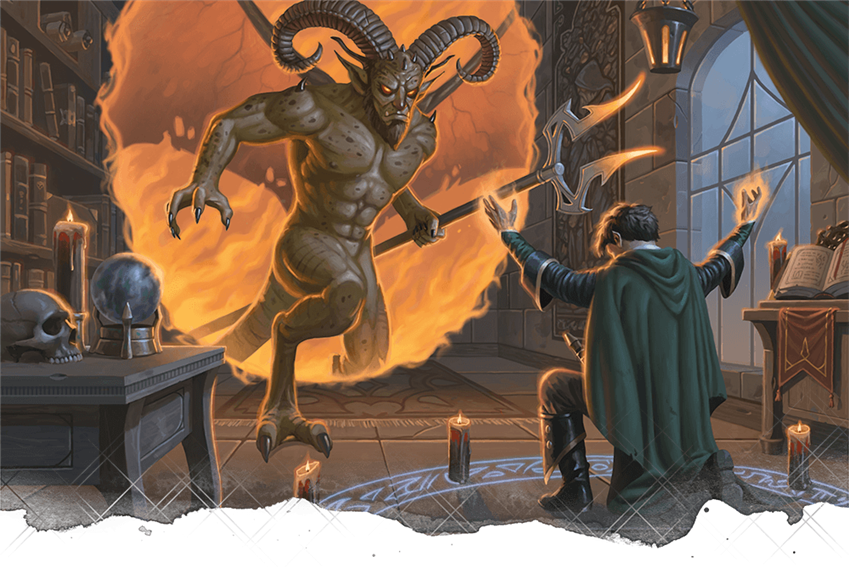
Suggested Build
As a wizard, you choose your Arcane Tradition at 2nd level. This gives you a little bit of time to feel out what you want your playstyle to be before you select your preferred subclass. You may find that your spells feel a little lackluster at 1st level, since you only have two 1st-level spell slots to use before falling back on your cantrips. Even using your Arcane Recovery feature to get one 1st-level slot back during a short rest, your cantrips may seem like they’re the star of the show. That’s fine! As you gain levels, you’ll gain more and more spell slots, and in time you won’t have to fall back on simple cantrips.
You should choose a race that improves your Intelligence score, and either your Dexterity or Constitution scores. As a wizard, Intelligence is your most important ability. Your spells are powered by your own knowledge of the arcane workings of magic, and improving this understanding makes it easier for you to hit with spell attacks and harder for enemies to save against your spells. As such, gnomes make fantastic wizards, as their innate intellect makes them natural studies. High elves also make excellent wizards, as they gain a natural bonus to both Dexterity and Intelligence, and also grant you an extra cantrip. Variant humans also have a good time as wizards; gaining a free feat is nothing to sneeze at.
Choose EQUIPMENT instead of GOLD at the end of character creation. Since you’ll probably be choosing at least one ranged damage-dealing cantrip, you can take a quarterstaff so that you have a little bit of protection up-close. Choosing a component pouch or an arcane focus is a purely aesthetic choice, and choosing a scholar’s or an explorer’s pack is a fairly insignificant decision. A scholar’s pack will be useful in a more city-based campaign, but if you plan on traveling cross-country, then an explorer’s pack is the superior choice.
Spells
Wizards can copy so many spells into their spellbook that you don’t have to be too choosey when selecting your spells at each level. Nevertheless, it couldn’t hurt to make very clear choices, especially if your DM doesn’t give out a lot of spell scrolls to copy, or doesn’t pit you against many other enemy wizards with spellbooks to steal. As a 1st-level wizard, your spellbook starts with six spells in it, and you can prepare a number of spells equal to Intelligence modifier + your wizard level (minimum of one spell). Don’t forget that all of these spells must come from the wizard spell list. You also start play with 3 cantrips, also from the wizard spell list. You gain two new wizard spells every level, and you also gain new cantrips from time to time, so keep an eye on the Wizard Table when you gain a new level.
As a conjurer, you’ll want at least two spells marked DEFENSE, one spell marked either OFFENSE, and one spell marked either SOCIAL or SUPPORT, depending on how you want to play your character. Spells on this list from the conjuration school are also noted, since they can be used to refresh your Benign Transposition feature, starting at 6th level.
Note that this list only includes some spells from the Player's Handbook, so if you want to choose more unusual spells, or have other sources like Xanathar's Guide to Everything, you'll have to do a little self-directed research. This list is just here to get you started if this is your first time playing a conjurer.
- Burning hands (OFFENSE)
- Charm person (SOCIAL)
- Detect magic (EXPLORATION)
- Disguise self (SOCIAL)
- Fog cloud (DEFENSE; conjuration)
- Find familiar (OFFENSE/EXPLORATION; conjuration)
- Mage armor (DEFENSE)
- Grease (DEFENSE; conjuration)
- Thunderwave (OFFENSE)

Feats
Once you’ve improved your Intelligence score to 18 or 20, you can increase your power with a few useful feats. The following feats are good picks for School of Conjuration wizards, and will improve your reliability in your own desired area of expertise:
Conjurers don’t have any feats that they desperately want, so focus mainly on improving your Intelligence score. Some feats like Keen Mind, Linguist, and Observant can give you a fun character quirk while still giving you a minor boost to your Intelligence, but don’t pick these unless they support your character concept.
If you want more advice for building a wizard, check out Wizard 101. Have you ever played a School of Conjuration wizard? What advice would you give to players that want to play this subclass? Join us next week as we begin a new slate of Class 101 articles in Artificer 101: Alchemist!
Create A Brand-New Adventurer Acquire New Powers and Adventures Browse All Your D&D Content
 James Haeck is the lead writer for D&D Beyond, the co-author of Waterdeep: Dragon Heist, Baldur's Gate: Descent into Avernus, and the Critical Role Explorer's Guide to Wildemount, a member of the Guild Adepts, and a freelance writer for Wizards of the Coast, the D&D Adventurers League, and other RPG companies. He lives in Seattle, Washington with his fiancée Hannah and their animal companions Mei and Marzipan. You can find him wasting time on Twitter at @jamesjhaeck.
James Haeck is the lead writer for D&D Beyond, the co-author of Waterdeep: Dragon Heist, Baldur's Gate: Descent into Avernus, and the Critical Role Explorer's Guide to Wildemount, a member of the Guild Adepts, and a freelance writer for Wizards of the Coast, the D&D Adventurers League, and other RPG companies. He lives in Seattle, Washington with his fiancée Hannah and their animal companions Mei and Marzipan. You can find him wasting time on Twitter at @jamesjhaeck.








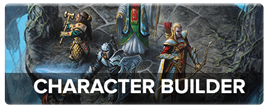
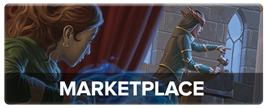
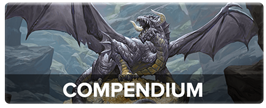
-
View User Profile
-
Send Message
Posted Nov 10, 2020As much as I love this series (which is going to be quite the undertaking what with the 22 brand new subclasses coming out in Tasha's), I must admit I miss the Encounter of the Week series. Full honesty: probably 50% of my homebrew campaign utilized the EotW articles (with another 20% coming from published adventures), and I seriously miss being able to read over them for inspiration (or just outright prewritten encounters).
-
View User Profile
-
Send Message
Posted Nov 10, 2020Encounter of the Week is not gone forever! The sun will shine on new encounters once again, in time.
-
View User Profile
-
Send Message
Posted Nov 10, 2020I can’t wait! 👍
-
View User Profile
-
Send Message
Posted Nov 10, 2020I have a copy of Tashas Cauldron of Everything ask me anything.
-
View User Profile
-
Send Message
Posted Nov 10, 2020How'd you get it early?
-
View User Profile
-
Send Message
Posted Nov 10, 2020The real question is how do you keep from pissing off everyone else at the table with how long you and your summons take
-
View User Profile
-
Send Message
Posted Nov 11, 2020How does everyone feel about conjuring spell components? So one of the Clerics in my group wants to cast Hero’s Feast and we need the 1000 GP bowl encrusted with gems, and *poof* I conjure the bowl using Minor Conjuration (as I saw one in Waterdeep on one of my journeys). Success! Or failure?
-
View User Profile
-
Send Message
Posted Nov 11, 2020Only for components that have no cost or aren't consumed. Otherwise it's too busted.
-
View User Profile
-
Send Message
Posted Nov 11, 2020That is awesome! How long did it take her to summon and bind a Shoosuva? What level did she have to be at?
-
View User Profile
-
Send Message
Posted Nov 11, 2020I've always wanted to play a conjurer, since I've always seemed to enjoy playing them in other medium. Nothing quite matches the feeling of summoning a powerful beast or monster to fight for you. However, at least until tasha's comes out, I've never gotten to really play around with that. I have a whole character set up and everything, but the spells that existed already didn't match with summoning a creature to fight for you. Thankfully some of those spells are coming with Tasha.
-
View User Profile
-
Send Message
Posted Nov 11, 2020Planning what you're going to do before it actually gets to your turn helps immensely.
-
View User Profile
-
Send Message
Posted Nov 11, 2020Reply to some guy earlier:
It beats nothing. Some articles don’t even have a story section I think. Plus for the ones written by the guy who wrote this one are usually a good quick read
-
View User Profile
-
Send Message
Posted Nov 11, 2020It feels like it's not really the intention of the ability, otherwise surely all Wizards would learn Minor Conjuration? It's really weird that it's never been errata'd though, the only thing that really seems to limit it is that objects created are temporary and visibly magical, so they're not "true" versions of what they appear to be. But it's really still up to your DM if a magical facsimile of an object counts as a replacement for the usually non-magical spell components.
Jeremy Crawford has suggested that the conjured item has no value, but again RAW nothing actually confirms this, though it would make sense as otherwise you could just conjure incredibly valuable objects and sell them.
-
View User Profile
-
Send Message
Posted Nov 11, 2020RAW you definitely can. But I would rule that you can for if it isn't consumed, but if it is consumed, it doesn't work(or maybe it works but you can't use Minor Conjuration ever again). Or I might rule that it costs components(like some spells) and they are equal to the cost of the item.
-
View User Profile
-
Send Message
Posted Nov 11, 2020Keen Mind can't be replicated by taking good notes(unless you want to spend only 10 min every session actually playing and the rest note-taking and having your GM describe random things in excruciating detail). Imagine this: you are an arcane trickster who takes 2 levels in this class and have the Keen Mind feat. You can now conjure forged documents in perfect detail without having to even roll a die. Or, you can conjure an exact replica of the king's signet ring. The possibilities are endless.
-
View User Profile
-
Send Message
Posted Nov 11, 2020I just started running my own sessions for roommates, and have definitely used encounters of the week articles for inspiration. I've even made one of the encounters the beginning of a longer story arc because I just loved the "Frozen Memories" storyline for a creepy winter night kind of game.
-
View User Profile
-
Send Message
Posted Nov 11, 2020my favorite use of minor conjuration was to conjure giant rocky spires and use them as ammo for the catapult spell.
-
View User Profile
-
Send Message
Posted Nov 11, 2020First-person in the quote, does your character have a bowl handy?
-
View User Profile
-
Send Message
Posted Nov 11, 2020With Minor Conjuration, you use your action to conjure up an inanimate object in your hand or on the ground in an unoccupied space that you can see within 10 feet of you. This object can be no larger than 3 feet on a side and weigh no more than 10 pounds, and its form must be that of a non magical object that you have seen. So if I saw a bowl encrusted with gems that was worth 1000gp at a Jeweler’s in Waterdeep on a past journey, I could conjure one up in my hand. As per what Haravikk said above, the item would have no real value, but really, it would be up to the DM to decide. If the DM thinks that yes, this is your jam as a Conjuration Wizard and lets you conjure up a giant diamond for the Revivify spell, or a bowl encrusted with gems for the Heroes’ Feast spell then great! If not, conjure up a big handkerchief to cry in and start making some gold to buy the spell components with.
-
View User Profile
-
Send Message
Posted Nov 11, 2020A comment on the Minor Conjuration -> spell components discussion: Jeremy Crawford delivered his ruling on the feature in 2016. "[The conjured object] is worth 0 gp; it's a magical facsimile." Of course, Sage Advice rulings are nothing more than the managing editor's interpretation of the rules. You are free to rule however you wish at your own game table. Just be waned that doing so will unbalance most spells that use expensive material components as a balancing mechanism.